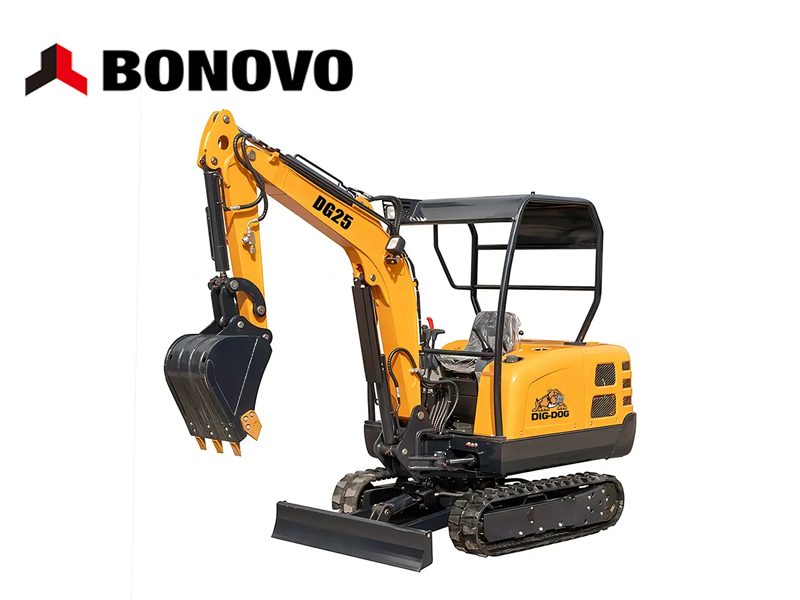
The Excavator accessories computer display screen can see data such as pressure, current, and voltage of the hydraulic system, but the displayed pressure values cannot reflect the process of pressure rise in various parts of the hydraulic system.
By using an oil pressure gauge to detect the hydraulic system of an excavator, the pointer swing condition can be used to see both the pressure value and flow characteristics, as well as the changes in fluid flow resistance of each hydraulic component, making it easier to identify the fault location.
01 Oil pressure gauge connection method
(1) Ordinary oil pressure gauge
At present, Excavator accessories commonly use a triple pump consisting of P1, P2, and P3 pumps. P1 and P2 pumps are negative flow controlled variable displacement piston pumps that supply oil to the working oil circuit. The P3 pump is a gear pump that supplies oil to the pilot control oil circuit.
(2) Universal oil pressure gauge
When using a universal oil pressure gauge to diagnose faults, pressure sensors should be installed in various parts of the excavator hydraulic system in advance. The universal oil pressure gauge can record 1000 detection values per second and can capture pressure and load changes from one thousandth of a second to several hours at will. The universal oil pressure gauge is the best diagnostic tool for in-depth analysis and research of hydraulic system performance and troubleshooting. However, the core diagnostic principle is still the detection principle of the oil pressure gauge. Only by understanding the working principle of the hydraulic system and the detection principle of the oil pressure gauge can the recorded data of the universal oil pressure gauge be analyzed and summarized.
02 Testing Method
(1) Detecting negative flow control status
This test should start from the moment the engine is started, paying attention to observing the pressure rise and speed of the three pumps. The oil pressure gauge of P1 and P2 pumps should display a pressure of about 2.8 MPa, the pressure gauge of P3 pump should display a pressure of 3.8 MPa or above, and the oil pressure gauge connected to the two feedback pipes of P1 and P2 pumps and the multi way valve should display a pressure of about 2.2 MPa; The output pressure of the negative flow control proportional solenoid valve should be 0.2MPa.
If the pressure value detected by the oil pressure gauge is different from the above detection results, it indicates that the pressure adjustment of the negative flow control system is incorrect, or there is a malfunction in the related electronic control system.
(2) Detecting the variable mechanism of the working pump
Operate the Excavator accessories to lift the boom, and at this time, the P1 and P2 pumps merge. When the oil pressure of P1 and P2 pumps rises, the pressure gauge installed on the two feedback pipes connected to the multi way valve should drop to around 0.2 MPa.
If the oil pressure does not drop to around 0.2 MPa, it indicates that the oil in the large chamber of the variable piston in P1 and P2 pumps has not been completely drained, causing the variable piston to be unable to move to the set position and the pump's swash plate to not be converted to the maximum angle.
(3) Check whether the working pump works consistently
Still lift the boom to merge the P1 and P2 pumps. At this time, the pointer of the oil pressure gauge on the P1 and P2 pumps must swing consistently, and the highest pressure value should also be the same. If the pointer of the oil pressure gauge swings first and then, and the pressure rise of P1 and P2 pumps is inconsistent, it may be due to the slow pressure rise of the pump's inclined plate being stuck or unable to swing back to the minimum angle.
If the pointer shakes after the oil pressure gauge shows the highest pressure value, it indicates that there is a leakage in the constant power valve of the P1 and P2 pump regulators. If the needle of the oil pressure gauge shakes when it reaches the highest pressure value, it indicates that the main relief valve is overflowing.
(4) Check whether the variable mechanism is leaking
Extend the Excavator accessories boom, arm, and bucket, place the bucket on the ground, and adjust the engine to idle. At this point, operate the boom to slightly lift and slowly ascend. Suddenly shake the joystick slightly in the direction of accelerating and lifting the boom when the boom is raised. After the joystick shakes, it should be immediately restored to the original state of slowly lifting the boom.
If the oil pressure gauge on the P1 and P2 pumps does not follow the swing when accelerating and lifting the boom, it may be due to the variable mechanism of the P1 and P2 pumps being stuck or leaking.
Choose BONOVO for high-quality, customizable brush cutters for skid steers with fast delivery. Contact us today to discover how our superior products can enhance your land management tasks!

 Hot News
Hot News2024-09-18
2024-09-18
2024-07-03
2024-03-08
2024-03-08
2024-03-08